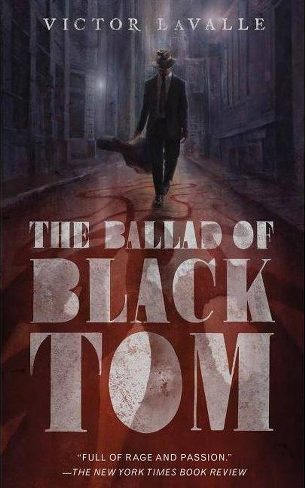
The book cover for “The Ballad of Black Tom” by Victor Lavalle. A man in early 20th century attire walks down a street, with shadowy tentacles extending before him. Photo courtesy Tordotcom.
The Ballad of Black Tom by Victor LaValle (2016)
Trigger Warnings for The Ballad of Black Tom
When readers think of cosmic horror, Lovecraft and “The Necronomicon” invariably come up. Lovecraftian mythology continues to be a staple of the subgenre, with many authors using it as inspiration for new stories. “The Ballad of Black Tom” is one of them. The book follows Charles Thomas Tester, or “Black Tom,” as he hustles to make a living as a musician and jack of all trades on the streets of early 20th-century New York. Things begin to go awry for Tommy Tester when he delivers an occult tome to an old lady in Queens and finds himself embroiled in a world of mystique that shows as little respect for him as a Black man as his old world does.
The Ballad of Black Tom sets out to do a lot in a novella. LaValle’s usage of Lovecraft’s Cthulhu mythos, tied with a look at racism and power structures through Tommy Tester’s perspective, is particularly impactful considering Lovecraft’s racist history. While those who are familiar with Lovecraft may get more out of LaValle’s novella than readers who aren’t, the story is understandable without prior knowledge. The cosmic horror is still indescribable and mind-melting, and readers are left wondering which plane of reality–ours included–holds the worst monsters.